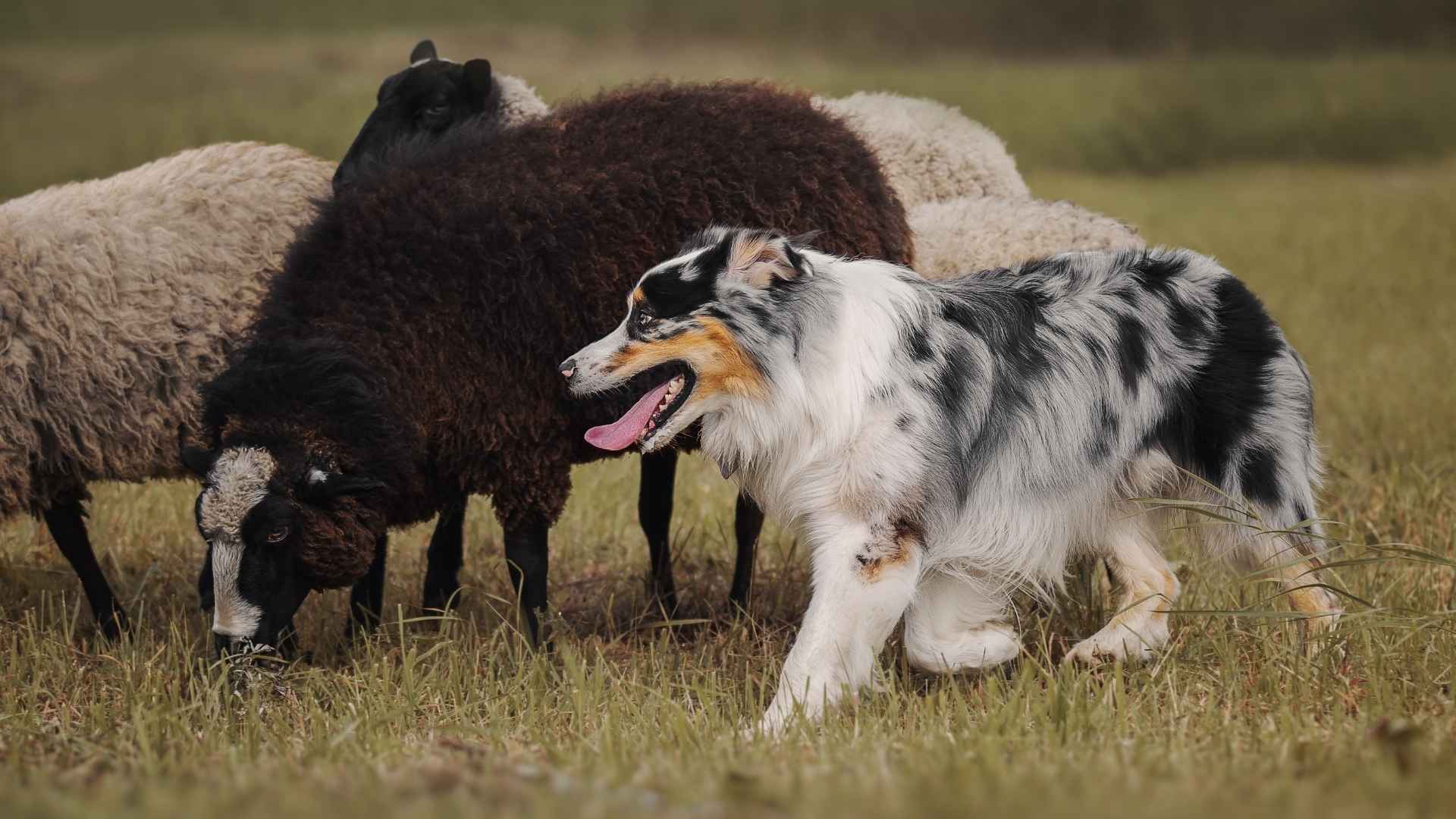Did you know that some of the world’s hardest-working dogs also happen to be incredibly gentle and affectionate? While many working dogs are known for their energy and strength, some have the perfect balance of power and calmness, making them ideal for families, workplaces, and even therapy roles.
These dogs don’t just have the stamina to work tirelessly; they also possess a patient, loving nature that makes them great companions. Whether they’re assisting with tasks or providing emotional support, these gentle working breeds are as kind as they are capable.
From herding to rescue and even service roles, these dogs showcase that kindness and reliability can go hand in hand. In this blog, we’ll explore some of the kindest working dog breeds that excel at both their jobs and being the loyal, affectionate companions everyone dreams of.
Gentle Working Dog Breeds
1. Bernese Mountain Dog
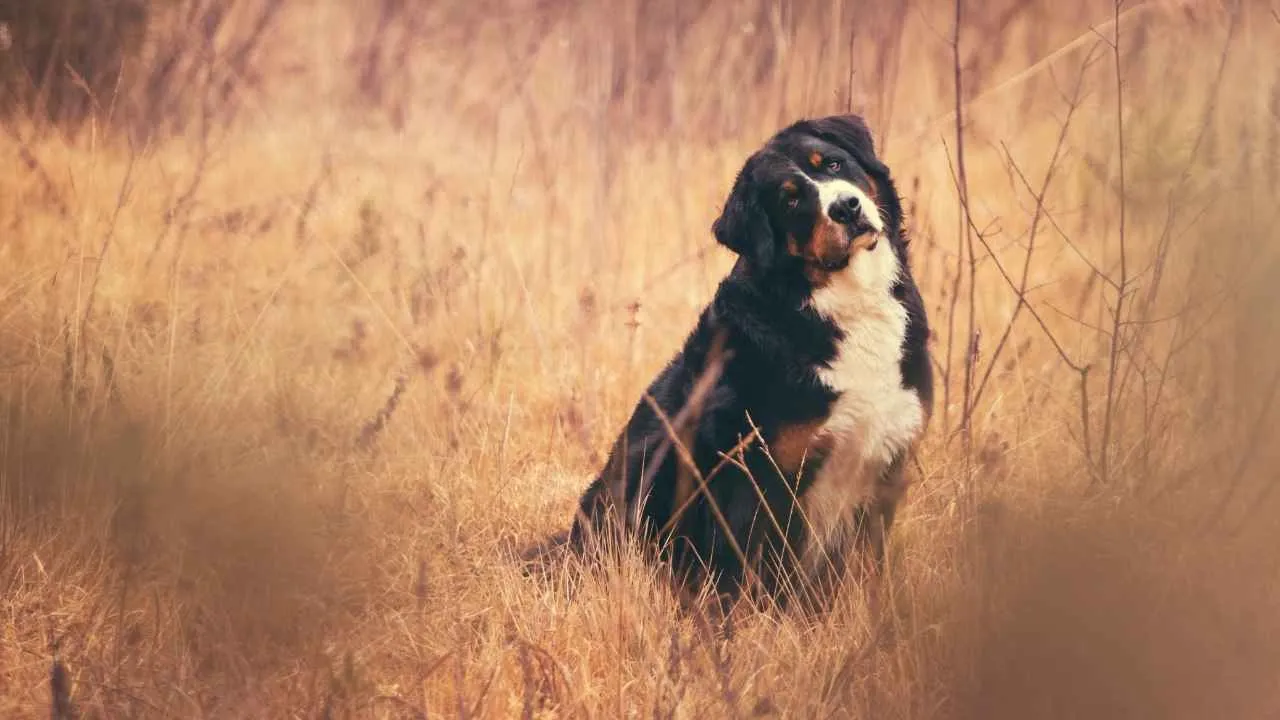
The Bernese Mountain Dog is a large, robust breed with roots tracing back over 2,000 years to Roman times in Switzerland. Standing over 27 inches tall, this striking canine is instantly recognizable by its tri-color coat—jet black with white and rust markings—and soulful, intelligent eyes. Despite their commanding size, Berners are gentle-natured, especially with children, and develop strong emotional bonds with their families.
Bred as a multipurpose farm dog in the Swiss Alps, the Bernese—named after the Canton of Bern—was tasked with herding, guarding, and pulling carts. Renowned for their strength, they can haul loads up to ten times their own weight, making them invaluable laborers on alpine farms. The breed was officially recognized by the American Kennel Club in 1937.
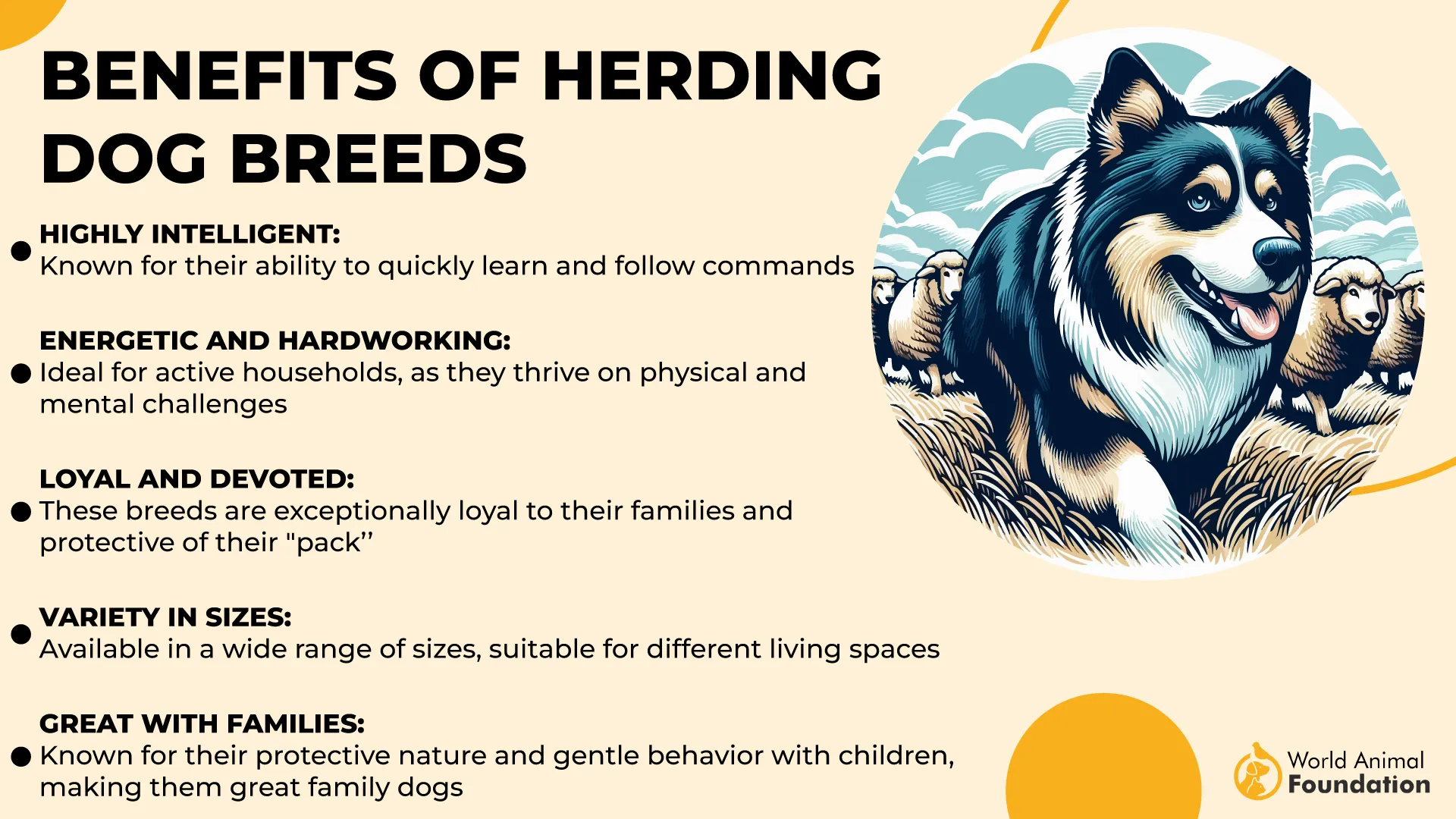
Their thick, weather-resistant coat allows them to thrive in colder climates, and their versatility once made them a staple for transporting goods and safeguarding homesteads. Though powerful, they are affectionate and loyal, thriving in family environments where they can be close to their people.
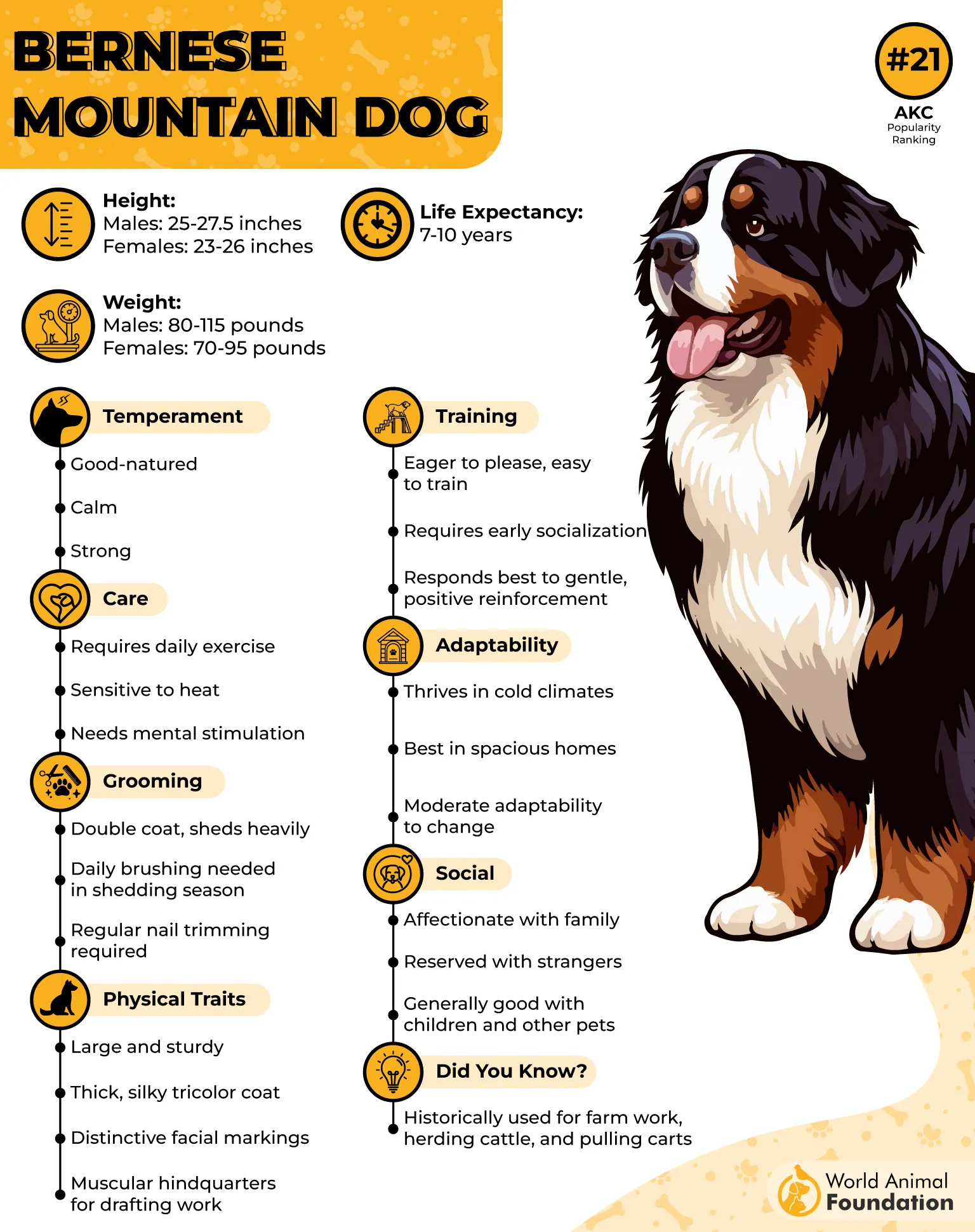
Berners are known for their endearing personalities, often playful and clownish, well into adulthood due to their slower emotional development. Eager to please and attuned to human moods, they often repeat behaviors that bring joy to their owners, showcasing a keen sensitivity.
Loyal and devoted, Bernese Mountain Dogs are particularly good with children and often form a special attachment to one family member. While reserved around newcomers, they are never aggressive, and their noble demeanor, coupled with a steadfast temperament, makes them both admirable workers and cherished companions.
2. Boerboel
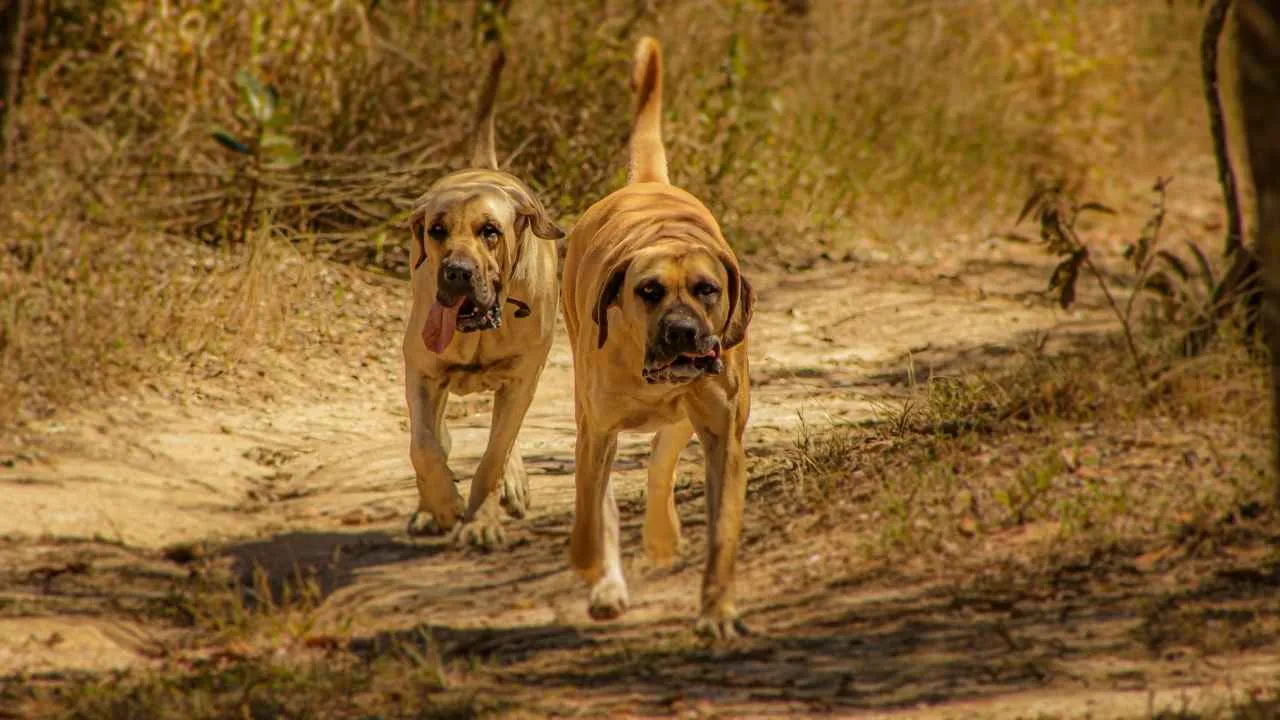
The Boerboel, also known as the South African Mastiff, is a powerful and imposing breed originally bred to guard South African farms from predators like hyenas and lions. With a sleek coat, muscular build, and a broad, blocky head, Boerboels can stand up to 27 inches tall and weigh as much as 200 pounds.
Despite their intimidating size, they are extremely intelligent and eager to learn, making them highly trainable. However, their dominant nature requires early training and socialization to prevent them from becoming overly assertive.
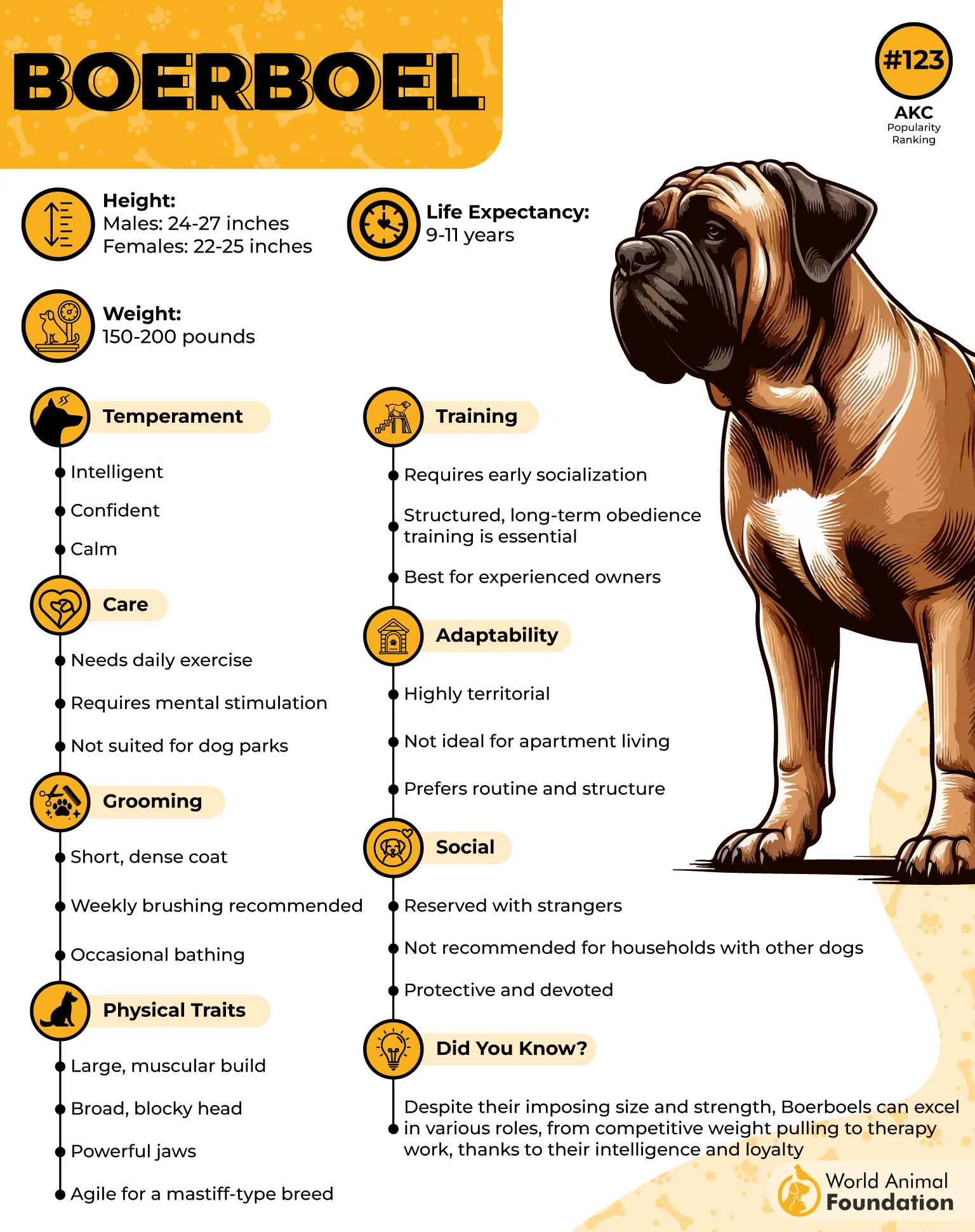
As noted by the American Kennel Club (AKC), Boerboels are fiercely loyal to their families, with a strong protective instinct. They excel in various activities, including obedience, agility, and dog sports, and require regular mental and physical exercise.
Daily walks or play sessions in a securely fenced area are essential for keeping them active and engaged. Due to their guarding nature, they should never be allowed off-leash, and interactions with unfamiliar dogs or people should be supervised.
This breed’s loyalty and protectiveness make them great companions for families, especially with kids, though interactions must be monitored due to their size and strength. Because of their guarding instincts, proper training is necessary to ensure they distinguish between play and potential danger, and especially children must be taught how to interact safely with them.
When properly introduced, they can get along with other dogs or cats, but they do best as the only pet in the household. A confident and experienced dog owner is essential, as Boerboels need a firm yet calm hand to guide them.
Boerboels are strong, loyal, and protective dogs that thrive in a home with experienced owners. Their size, strength, and intelligence make them ideal guard dogs for families, but they also require a home where they receive adequate mental and physical stimulation.
3. Boxer
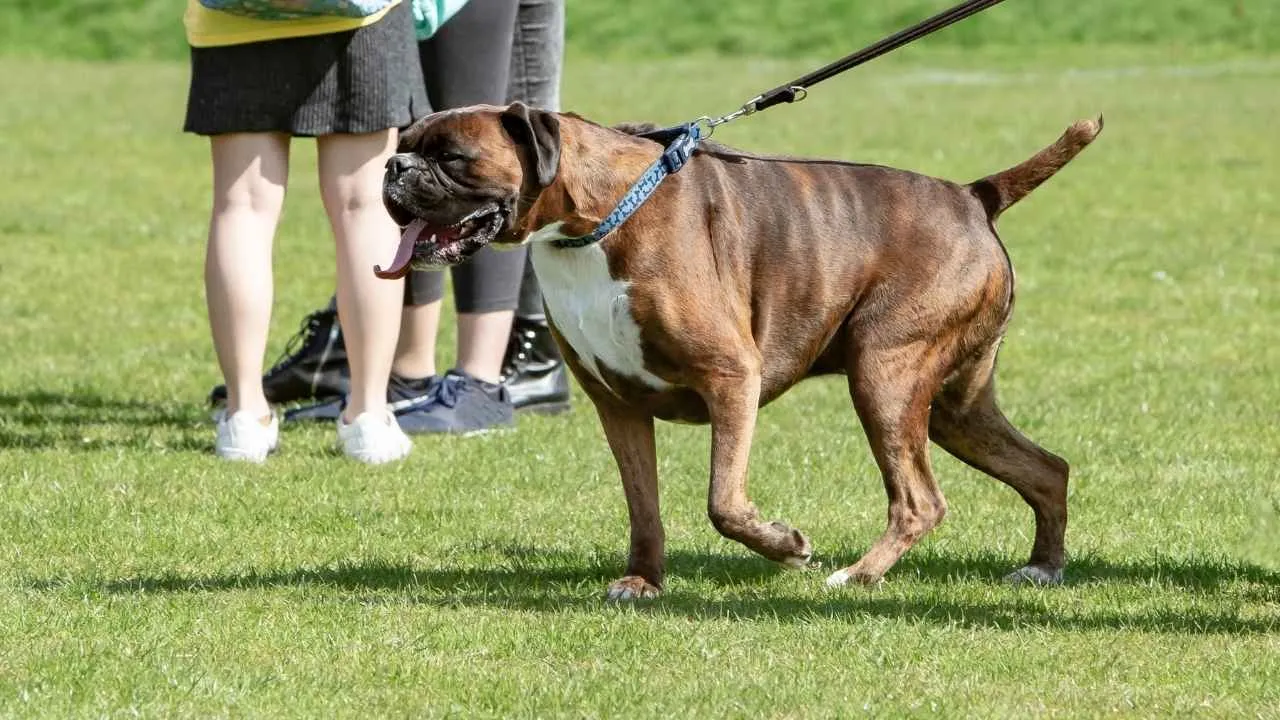
The Boxer is a medium-sized, athletic breed originally developed in Germany from the Bullenbeisser and other powerful dogs like the Bulldog and Great Dane. Known for its distinct square muzzle, expressive black mask, and glossy fawn or brindle coat, the breed earned its name from a playful “boxing” gesture using its front paws. Initially bred for tasks like bull-baiting and guarding, Boxers later became valued for police work and companionship.
This breed is energetic, spirited, and affectionate, thriving in active households. While their lively personality makes them endearing and entertaining, it can also be overwhelming for small children or older adults. They are quick learners with a strong desire to please, but their independence can lead to occasional stubbornness. Their natural vigilance and loyalty make them reliable watchdogs.
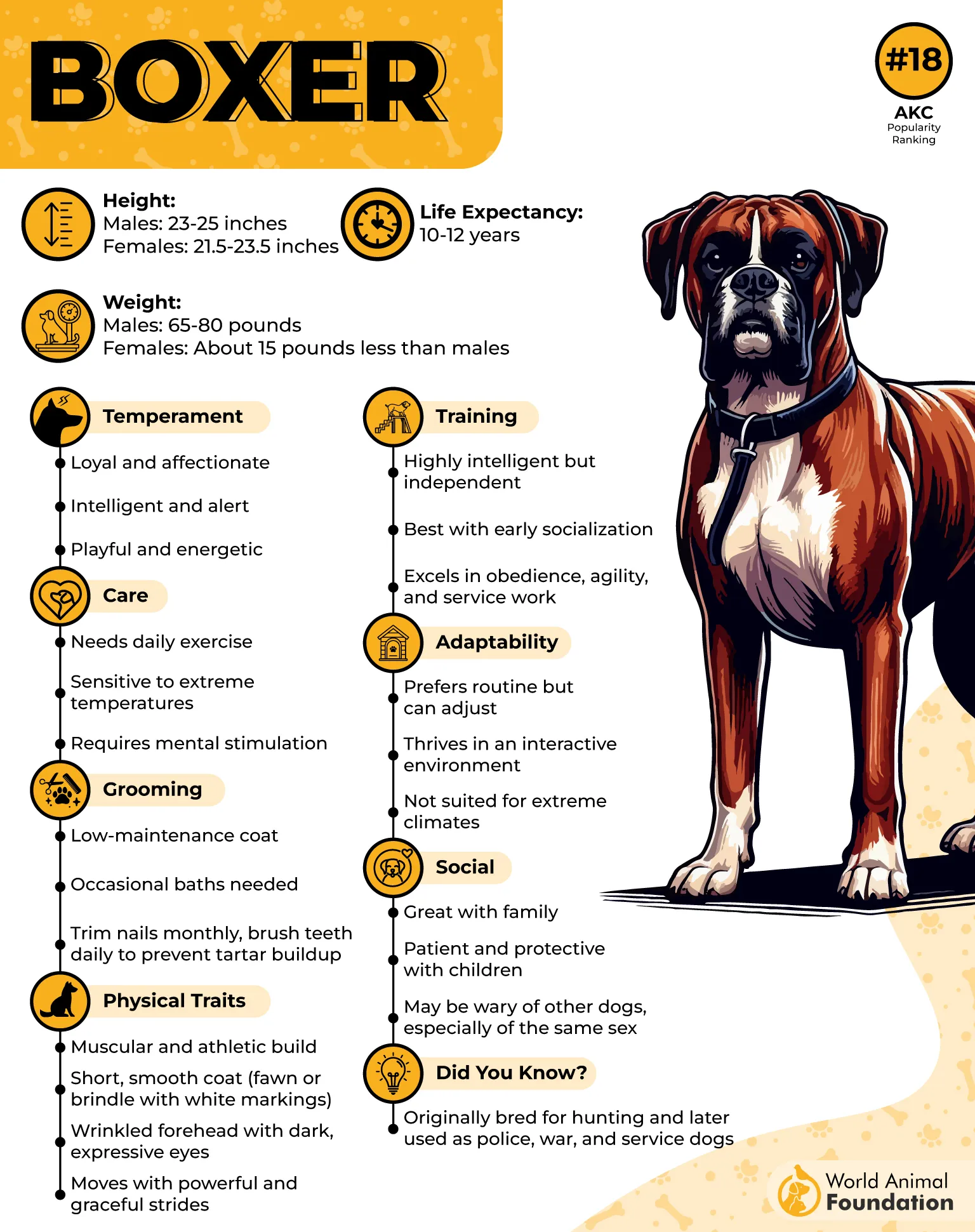
Boxers are well-built dogs with compact, muscular frames. Males can reach up to 25 inches tall and weigh 65–80 pounds, with females being slightly smaller. Characteristic physical features include a broad head, an undershot jaw, and a short back. Traditionally, ears are cropped and tails docked.
Highly devoted to their humans, Boxers crave attention and close interaction. They often “talk” through playful growls or whines and are known to shadow their owners around the house.
Their intelligence and trainability make them suitable for various working roles, including service and protection, though they require consistent training and early socialization.
PDSA states that Boxers are bright, energetic, and affectionate dogs with a protective streak. Their athleticism and loving nature make them ideal for dynamic families, provided they receive the guidance, exercise, and companionship they need to thrive.
4. Great Pyrenees
The Great Pyrenees is a powerful guardian breed developed in the rugged Pyrenees Mountains to protect livestock from predators like wolves and bears. Bred for stamina and bravery, these dogs are renowned for their endurance and unwavering vigilance, capable of withstanding harsh weather while remaining alert for days at a time.
Physically imposing yet composed, the breed can stand up to 32 inches tall and weigh over 100 pounds. Its dense, weatherproof white coat—sometimes marked with shades of gray, tan, or reddish hues—adds to its regal presence. Though calm by nature, the Great Pyrenees will respond swiftly and decisively if threatened, making it a dependable protector of both flocks and families.
Despite their imposing size, these dogs are affectionate and nurturing, particularly with children. Their heritage as independent workers contributes to a strong will and a tendency to bark—traits that require early training and socialization. While loyal and devoted, they are best suited to owners with experience in handling self-reliant breeds.
Slow to mature, the breed reaches full development by two years of age. Their independent streak demands patience, consistent guidance, and clearly defined boundaries. With proper structure, they become deeply bonded and obedient companions who take their protective role seriously.
Health concerns include common large-breed issues such as bloat, joint dysplasia, and osteosarcoma. Regular veterinary care, portion-controlled feeding, and weight management are key to promoting longevity and overall well-being in this majestic, steadfast guardian.
5. Leonberger
The Leonberger is a noble, giant breed from Germany, developed in the 19th century by blending Saint Bernards, Newfoundlands, and Great Pyrenees to resemble the lion emblem of the town of Leonberg. Originally bred for tasks like cart-pulling and water rescue, their striking appearance and gentle nature quickly gained favor among European nobility.
Massive and muscular, Leonbergers are distinguished by a black facial mask, soulful dark eyes, and a dense, water-resistant coat. Males often exceed 31 inches in height and weigh over 150 pounds, with a flowing mane around the neck that enhances their lion-like grandeur. Their graceful movement and tranquil gaze contribute to their almost mythical allure.
Despite their stature, Leonbergers are affectionate, perceptive, and exceptionally patient, especially with children. They make loyal companions and natural watchdogs, balancing kindness with protective instincts. However, they need experienced handlers who can offer consistent training, structured routines, and meaningful interaction to fulfill their emotional and physical needs.
WebMD states their webbed feet and love of water make them excellent swimmers, while their working heritage is well-suited for activities like carting, agility, and hiking. Due to their size and activity level, they require spacious environments and are poorly suited for confined living.
Regular grooming is essential to maintain their thick coat and manage shedding. Leonbergers also need early socialization and steady guidance to channel their independent yet cooperative temperament. With the right environment and dedication, they offer an unmatched blend of strength, sensitivity, and majesty.
6. Newfoundland
The Newfoundland, or “Newfie,” is a massive working dog from Canada, known for its strength, gentle nature, and exceptional swimming skills. Bred to assist fishermen by hauling nets and performing water rescues, they have partially webbed feet and a robust build suited for life at sea. Today, they continue to serve as top-tier water rescue dogs worldwide.
Physically, Newfoundlands are among the largest dog breeds, with males reaching up to 150 pounds and standing 28 inches tall. Their noble appearance features a broad head, soulful eyes, and a thick, flat coat in black, gray, brown, or the distinctive black-and-white Landseer variation.
Renowned for their gentle demeanor, Newfoundlands are affectionate and particularly good with children, earning them the nickname “nanny dogs.” Their easy-going nature makes them highly trainable with gentle guidance, and they thrive in family settings, getting along well with other pets.
Although calm indoors, they need regular exercise to stay healthy and content, enjoying activities like swimming, walking, and cart-pulling. Their strong work ethic and loyalty make them dependable companions and service dogs.
Alert but not overly aggressive, Newfoundlands will bark at unfamiliar visitors, but a warm, welcoming disposition balances their protective instincts once they sense no threat. With their dignified presence and affectionate nature, they make wonderful companions for families able to accommodate their size and needs.
7. Mastiff
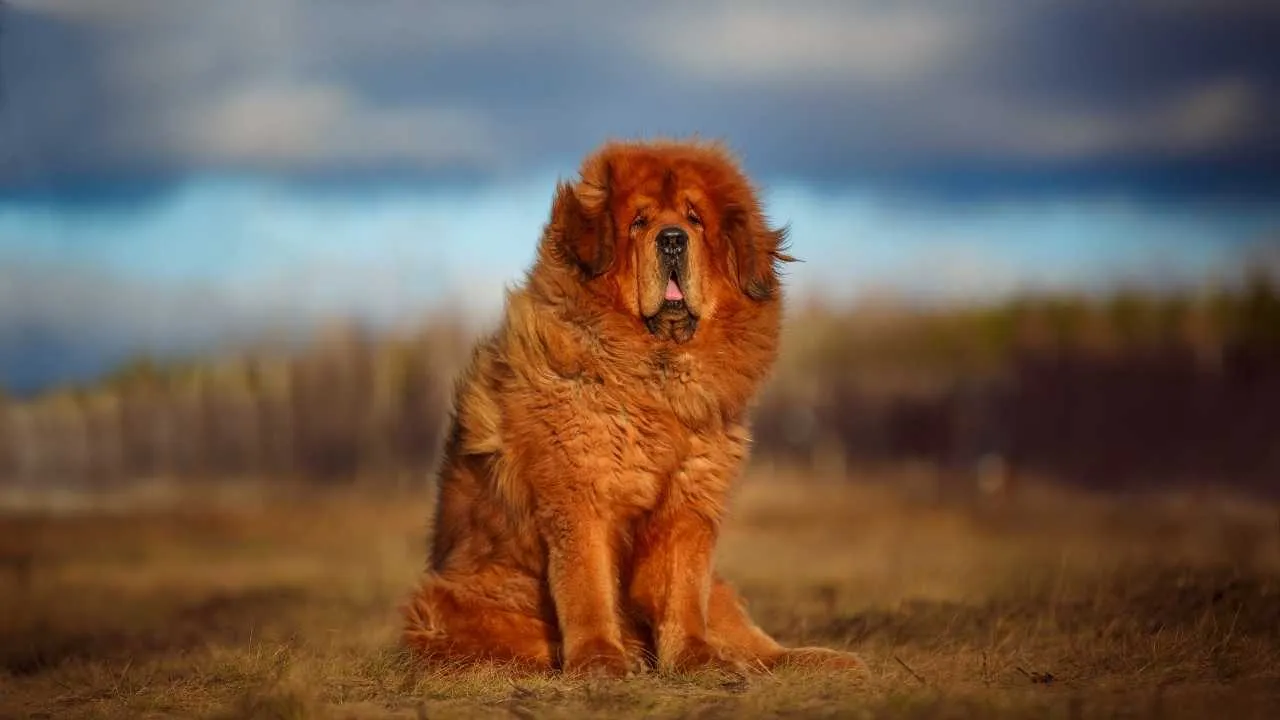
The Mastiff, or English Mastiff, is one of the oldest and most powerful dog breeds, with origins dating back over 2,000 years. Developed in medieval England, these dogs were used as guardians, war dogs, and combatants. Their ancestors are linked to the Molossian breeds, known for their strength and size. Mastiffs were famously involved in ancient Roman arenas and later blood sports like bullbaiting in England.
Physically, Mastiffs are imposing, with males standing between 27.5 to 30 inches tall and weighing up to 230 pounds, with some reaching over 340 pounds. They are recognized by their massive frame, broad head, drooping ears, and short, coarse coat in colors like apricot, fawn, and brindle. Despite their intimidating size, Mastiffs are gentle and affectionate with their families, often forming strong bonds.
Mastiffs are naturally protective and reserved with strangers, making them excellent watchdogs. Though calm at home, they require patient and consistent training, as their size and stubbornness demand a firm hand. They adapt well to family life and can excel in roles such as therapy or search and rescue.
Surprisingly, Mastiffs don’t require intense exercise; a moderate routine suffices. Their calm nature makes them ideal for quieter households, though their large size necessitates ample space. Special nutrition is recommended for growing puppies to prevent joint issues like hip dysplasia.
Health-wise, Mastiffs have a short lifespan of 6–10 years and are prone to conditions like bloat. Preventative care, including proper feeding schedules and surgeries, is crucial. Despite their warrior ancestry, modern Mastiffs are gentle giants known for their loyalty and affectionate nature.
Conclusion
iant working dog breeds offer a unique combination of strength, intelligence, and loyalty. While breeds like the Newfoundland and Mastiff are protective and tough, they also have a sweet, gentle nature, making them great family companions, especially with children. Breeds such as the Border Collie and Australian Cattle Dog are incredibly smart and agile, excelling in tasks that require focus and energy.
Labrador Retrievers and Golden Retrievers are excellent pets, known for their playful, good-natured temperament, and they thrive in active households. While these dogs require proper training and socialization, their loyalty and ability to work make them invaluable as both protectors and loving companions. With the right care, these giant breeds can become devoted family members, ready to take on tasks or simply enjoy time with their loved ones.


